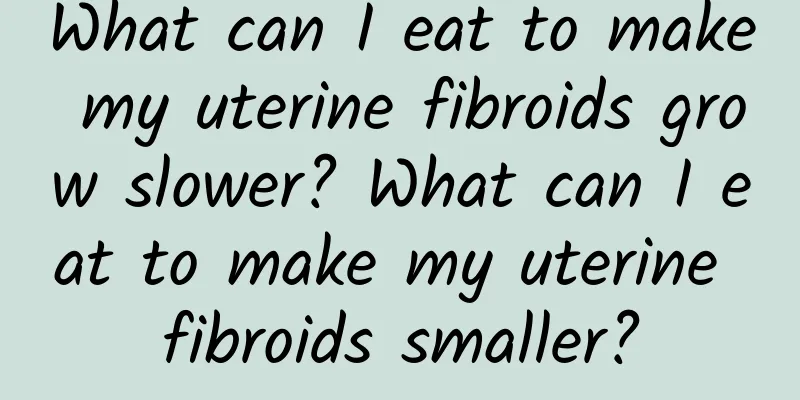How to take good care of patients with pelvic peritonitis

|
In daily life, many people will have pelvic peritonitis. When this extreme condition occurs, it will cause abdominal pain in patients, and it will also affect the patient's physical and mental health. Usually, everyone should pay attention to the occurrence of this disease, pay attention to reasonable health care, and also pay attention to understanding the care involved. So, what are the common care methods for pelvic peritonitis? 1. Patients with pelvic peritonitis should pay attention to diet and nutrition. During the fever period, they should eat light and easily digestible food. Patients with high fever and body fluid damage can be given pear juice, apple juice, watermelon juice, etc., but they should not drink it after icing. 2. If there is vaginal bleeding during menstruation, after abortion, and after gynecological surgery such as IUD insertion and removal, you must refrain from sexual intercourse, swimming, tub baths, and saunas. You must change sanitary napkins frequently. As this will reduce the body's resistance, pathogenic bacteria can easily take advantage of the opportunity to enter and cause infection. 3. Fever patients usually sweat a lot when the fever subsides. They should pay attention to keeping warm and keeping the body dry. Change clothes after sweating and avoid air conditioning or direct convection wind. 4. Patients with acute or subacute pelvic peritonitis should maintain smooth bowel movements and observe the characteristics of their stools. If pus is seen in the stool or there is a feeling of urgency and heaviness in the abdomen, they should go to the hospital immediately to prevent the pelvic abscess from rupturing the intestinal wall and causing acute peritonitis. 5. Eliminate all routes of infection, keep the perineum clean and dry, wash the vulva with clean water every night, and use a dedicated basin for each person. Do not use your hands to wash the vagina, and do not use hot water or soap to wash the vulva. In pelvic peritonitis, the amount of leucorrhea is large and sticky, so change underwear frequently and do not wear tight or synthetic underwear. 6. Some patients who suffer from chronic pelvic peritonitis take antibiotics on their own when they feel a little uncomfortable. Long-term use can cause vaginal flora disorder, which can increase vaginal secretions and appear as white bean curd-like leucorrhea. At this time, you should go to the hospital immediately to rule out fungal vaginitis. 7. Pay attention to the amount, quality, color and taste of leucorrhea. If the amount of leucorrhea is large, the color is yellow and thick, and it has a foul smell, it means that the condition is serious. If the leucorrhea changes from yellow to white, the amount changes from large to small, and the taste tends to be normal, it means that the condition has improved. Patients with pelvic peritonitis should pay attention to their diet and care methods, pay attention to their own conditions, eat more easily digestible foods, and pay more attention to their hygiene during menstruation. They should also pay attention to health care in their daily lives, effectively alleviate the disease, so as not to bring more harm, and pay attention to more rest in their daily lives. |
<<: How to care for chronic pelvic peritonitis
>>: How to care for pelvic peritonitis
Recommend
How does the hospital treat premature ovarian failure?
For premature ovarian failure, try to go to local...
There is no limit to fatigue at work, the body is dehydrated~ Drinking water is not tiring, healthy and happy
With the recent heat wave, many office workers fr...
How to treat endometrial tuberculosis in regular hospitals
How does a regular hospital treat endometrial tub...
Typical symptoms of threatened miscarriage include
Typical symptoms of threatened miscarriage includ...
How to regulate irregular menstruation for women? Preventive measures for irregular menstruation for women
Once irregular menstruation occurs, female friend...
Do you know the dangers of cervical erosion?
According to the latest clinical data, almost 60%...
Attention, attention, cervical hypertrophy can lead to infertility!
Cervical hypertrophy can lead to infertility. Lad...
How to determine spontaneous abortion
Spontaneous abortion is a common complication dur...
How to treat moderate cervical erosion in women? It is recommended to treat moderate cervical erosion in women in this way
Cervical erosion is a very common gynecological d...
How to deal with habitual miscarriage?
For patients with habitual miscarriage, if they w...
What to do if you have premature menopause
What to do if you have premature menopause? When ...
What causes irregular menstruation after childbirth?
What causes irregular menstruation after childbir...
How to differentiate bacterial vaginosis
The most common symptoms of bacterial vaginosis a...
What are the symptoms of uterine fibroids?
Uterine fibroids (Hysteromyoma), also known as ut...
What to eat to nourish the body after 4 months of miscarriage
After miscarriage, the focus should be on balance...









